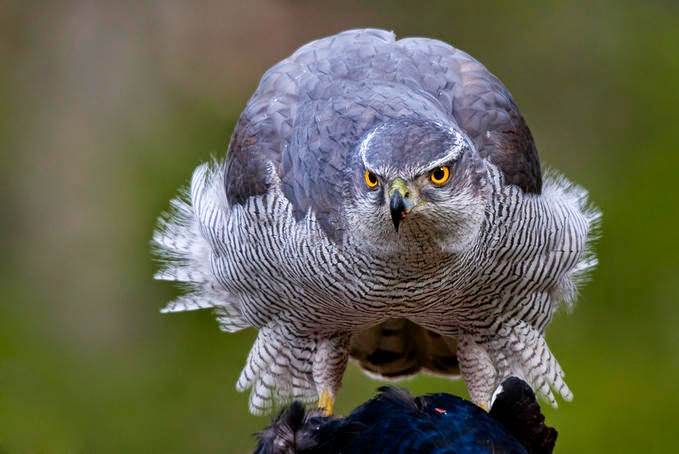Harris' Hawk
This fledgling is local to North America and is the latest broadly utilized expansion to the falconry positions and is currently prominent in Europe. This flying creature is unique in relation to most other in that it is social chasing in family amasses with other Harris' Hawks. These chase helpfully actually utilizing one another to remain on to increase a superior roost.
Plumage
The Harris' Hawk is a dim chestnut with rust hued fixes on the wrists.
Chasing
Ordinary quarry got with the Harris' runs from crows, birds, and quail to rabbits - generally the measure of the individual will focus the span of prey it can take. An expansive Harris' can without much of a stretch take a cottontail but not be sufficiently nimble for crows. In the wild their eating routine comprises of mice, reptiles, rats, rabbits, gophers, and winged creatures, in spite of the fact that they principally eat warm blooded animals.
Trivia
The Harris' Hawk is ordinarily called the "narrows wing bird of prey" alluding to the rust hues on the wings. It is likewise called the Black Hawk or the Harris' Buzzard.
Since these feathered creatures are so regularly flown in gatherings, falconers need to make careful arrangements to help their gathering structure. To keep recently presented Harris' Hawks from harming one another, a few falconers have taken an empty dot, in the same way as a Mardi Gras dot, embeddings it over the tip of a claw and sticking it set up. Thusly one flying creature is more averse to hurt an alternate in a mews or while being lived up to expectations. These are uprooted by basically bending off before chasing.
As this is a southwestern winged creature advanced for the warm atmosphere, they tend not to do well exposed to the harsh elements and can detest chasing in wet, moist frosty. These fowls are effectively frostbitten and don't endure the chilly well.
This winged creature commonly does not move.
Plumage
The Harris' Hawk is a dim chestnut with rust hued fixes on the wrists.
Chasing
Ordinary quarry got with the Harris' runs from crows, birds, and quail to rabbits - generally the measure of the individual will focus the span of prey it can take. An expansive Harris' can without much of a stretch take a cottontail but not be sufficiently nimble for crows. In the wild their eating routine comprises of mice, reptiles, rats, rabbits, gophers, and winged creatures, in spite of the fact that they principally eat warm blooded animals.
Trivia
The Harris' Hawk is ordinarily called the "narrows wing bird of prey" alluding to the rust hues on the wings. It is likewise called the Black Hawk or the Harris' Buzzard.
Since these feathered creatures are so regularly flown in gatherings, falconers need to make careful arrangements to help their gathering structure. To keep recently presented Harris' Hawks from harming one another, a few falconers have taken an empty dot, in the same way as a Mardi Gras dot, embeddings it over the tip of a claw and sticking it set up. Thusly one flying creature is more averse to hurt an alternate in a mews or while being lived up to expectations. These are uprooted by basically bending off before chasing.
As this is a southwestern winged creature advanced for the warm atmosphere, they tend not to do well exposed to the harsh elements and can detest chasing in wet, moist frosty. These fowls are effectively frostbitten and don't endure the chilly well.
This winged creature commonly does not move.
.jpg)





Comments
Post a Comment